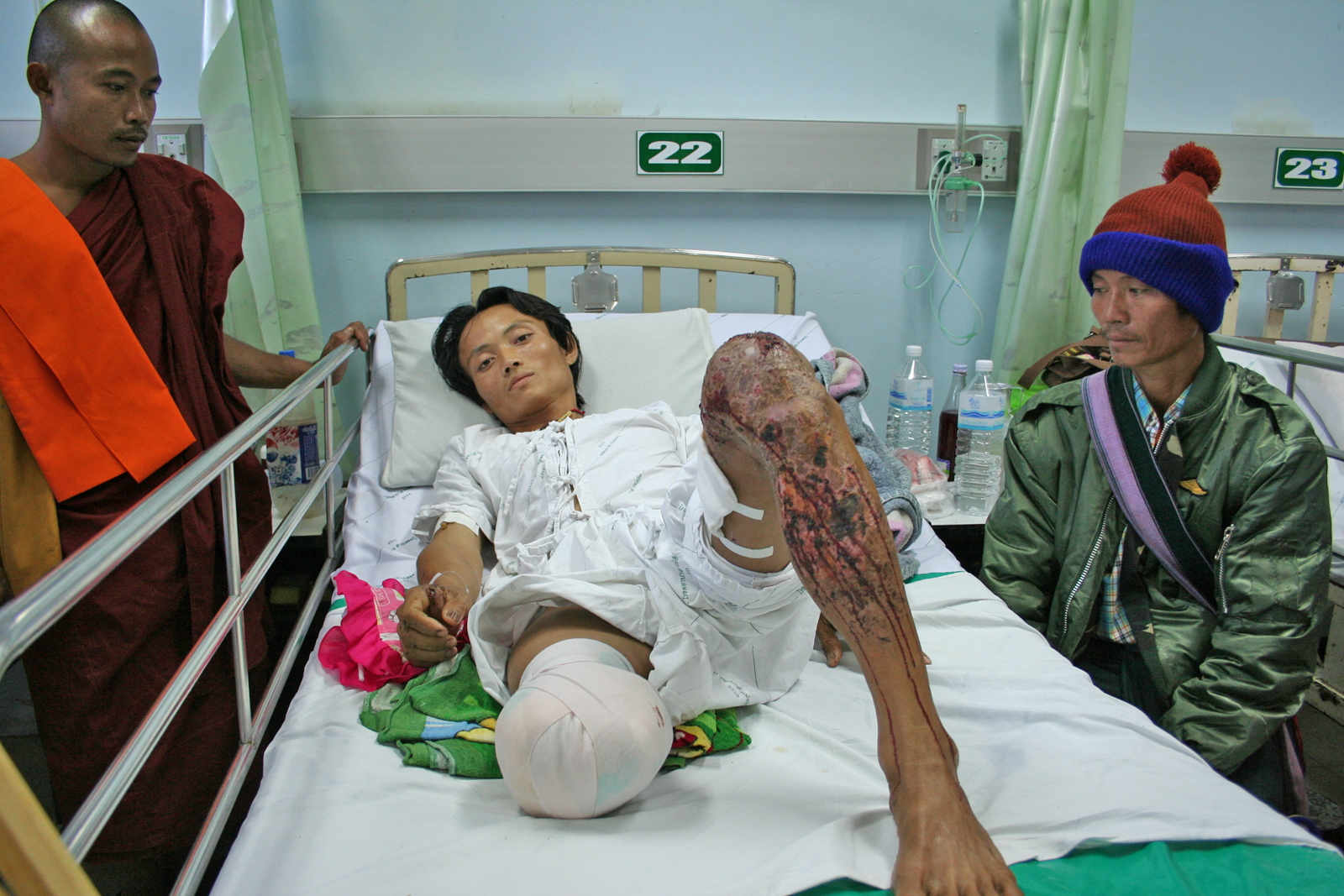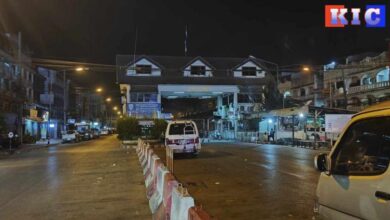A long war’s lingering reminder

For villagers in southeastern Burma, a tentative 2012 ceasefire between ethnic Karen rebels and the government has yet to address an intractable threat that lurks along their trails, in their rice paddies and even dangling from branches – landmines and unexploded ordinance.
Mine risk educator Pah Dah has spent the past six years traveling to remote villages in Karen State, providing villagers with the educational tools needed to avoid landmines and their lethal consequences.“I have seen many people who have been injured by landmines during my work,” said Pah Dah, who works for the Committee for Internally Displaced Karen People. “In conflict-affected communities there is almost no village without a landmine victim. In some villages, there are up to nine mine victims.”
Landmines, laid by ethnic armed groups, the Burma army and numerous militias during the six-decade war for Karen independence are in abundance along Burma’s border with Thailand.“The reality is very, very complex, and the Karen areas are particularly complex in terms of the number of different armed actors operating in those areas as well,” said Chris Rush, a senior program officer for Burma at Geneva Call, an NGO that works to bring non-state armed groups into line with humanitarian standards.
The organization signed a deed of commitment with the Karen National Union and its armed wing, the Karen National Liberation Army, in which troops pledged to refrain from using child soldiers or sexual violence. The KNU however has not signed Geneva Call’s third plank calling for a prohibition of landmine use.
Rush added that the Democratic Karen Benevolent Army, which was formed from a faction that split from the KNU in 1994 and sided with the government, before returning to fight alongside the KNU in 2010, has not signed any deeds of commitment with Geneva Call, and also has its own history of landmine usage.
Pah Dah said landmines and other ordinance hinder the ability of villagers to go about their daily routines. “If there is a minefield close to the village, to their farms or on paths, villagers will be afraid to go to their farm, collect firewood, forage for food or tend their cattle,” he said. “Villagers depend on these daily activities for their livelihood, so they face difficulties because of mines.”
For Pah Dah, even getting to villages where he can present mine safety information to residents can be dangerous.
“There are difficulties accessing some areas because of mines, but it is not impossible,” he said. “Sometimes we cross through minefields to get to some villages, and with local knowledge we can access these places.”
Every township in Karen State has some reported landmine contamination, said Yeshua Moser-Puangsuwan, a veteran Burma researcher for the International Campaign to Ban Landmines. He added that the extent of the problem and the precise number of mines remains unknown because no technical survey has been completed.
“Much of the mine pollution within Burma is what we would call a scattered mine problem,” Moser-Puangsuwan said. “You have somebody who threw a couple of mines over their shoulders as they ran through a field to prevent somebody else from chasing them. You have some mines that have been laid on a path on a certain hill to interrupt the use of that [path] by some other military group.”
Moser-Puangsuwan said that even a single landmine incident on a well-trodden path could ruin someone’s livelihood, citing an example where a plantation owner abandoned his farm after a bomb exploded on a trail nearby. The plantation’s farm workers, in turn, lost their jobs.
Landmines have killed at least 319 people in Burma since 1999, according to the Landmine Monitor, although this number is likely conservative because no official records are kept. Burma, which is not a signatory to the 1997 Ottawa Treaty banning landmine use, trailed behind only Afghanistan and Colombia in terms of landmine casualties worldwide in 2013, Rush said.
In the eyes of a long-time landmine campaigner like Moser-Puangsuwan, mine clearance is the only lasting solution to the problem, although mine risk education and landmine marking can work as a “stop gap”.
“A first step towards a number of things will be mine clearance, and mine clearance is both a costly and time consuming activity, so the sooner it begins, the better, as far as we are concerned,” Moser-Puangsuwan said. “Nobody should believe that if you do mine risk education in a village you’re eliminating the mine threat. The only way you eliminate the mine threat is by eliminating the mines.”
Aksel Steen-Nilsen, a program manager for Norwegian People’s Aid, said that a non-technical survey of the country’s mines would likely begin soon, adding that the NPA has already finished several pilot survey projects in Mon State in southeastern Burma.
It has also entered into an agreement with the Burma government to establish a mine action center that will coordinate mine-related activities across the country.
Despite outside pledges for mine assistance, Karen State residents have raised concerns that premature mine removal could open the door to land grabs or expose them to the Burmese military.“The international community has to also be very vigilant on this and make sure that it’s not supporting or carrying out mine action without clear humanitarian criteria, and it shouldn’t be a fuel to the already big challenges, such as land grabbing and the creation of mega projects without proper consultation with affected communities,” Rush said.
Land rights have been hotly contested in Burma in the face of rampant land confiscation across the country, and they remain at the forefront of the NPA’s considerations, Steen-Nilsen said. “It is difficult to say that no demining should take place before all development and land right issues have been resolved as innocent people daily will have to risk their lives living in areas with landmines,” he said. “All [international NGOs] that want to be involved in the clearance of landmines have made it clear that having clear guidelines regarding land rights issues would be very beneficial to have when the time is right for landmine removal.”
One bit of respite, Pah Dah said, is that armed groups have been planting fewer landmines in the wake of the ceasefire. “I don’t know about the whole country, but in my mission area, Dooplaya district in central Karen State and in the area that I reached, the danger of landmines at the moment has lessened a bit compared to the past years when armed conflict was ongoing,” he said.
Yet for villages and towns grappling with landmines across Karen State, the scars may never be completely erased. “It is sad to see that many lives have been affected by landmines, and the impact it has on the individuals injured by them, the family and even the community,” Pah Dah said.
A version of this article first appeared on March 21, 2014 as “Burma’s Hidden Killer” for ucanews.com.




